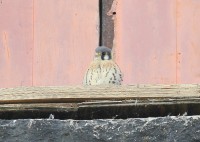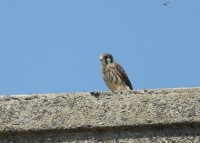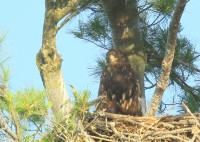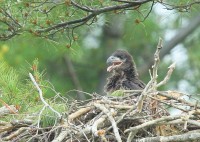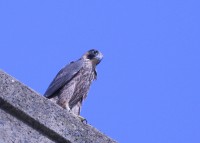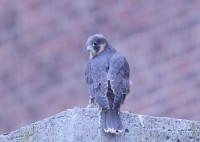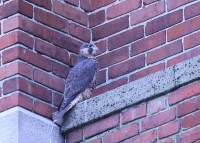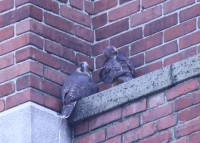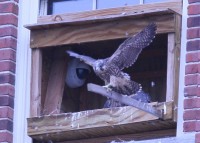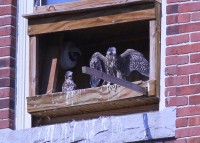Kestrel adult male and fledgling
June 26, 2014 in American Kestrel
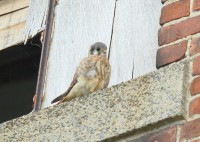 Flight agility increases noticeably during first week after nest departure, as flutter-glide is mostly replaced by deep wing-beats. Young appear hyperactive, changing perches frequently, attempting to pounce on various objects (including butterflies), performing exaggerated head-bobbing and tail-pumping intention movements, and emitting whine calls. Initially, parents deliver food to young; fledglings approach parents for food exchange by 1–2 wk postfledging. In post fledging mode we look for: perch-resting and preening to decrease, while perch-hunting, flying, and eating self-captured prey increase. Perch-hunting success peaks at 3 weeks, at which time begging behavior ceases. This parent and young were seen just east of the 250 Canal St. complex in Lawrence.
Flight agility increases noticeably during first week after nest departure, as flutter-glide is mostly replaced by deep wing-beats. Young appear hyperactive, changing perches frequently, attempting to pounce on various objects (including butterflies), performing exaggerated head-bobbing and tail-pumping intention movements, and emitting whine calls. Initially, parents deliver food to young; fledglings approach parents for food exchange by 1–2 wk postfledging. In post fledging mode we look for: perch-resting and preening to decrease, while perch-hunting, flying, and eating self-captured prey increase. Perch-hunting success peaks at 3 weeks, at which time begging behavior ceases. This parent and young were seen just east of the 250 Canal St. complex in Lawrence.
